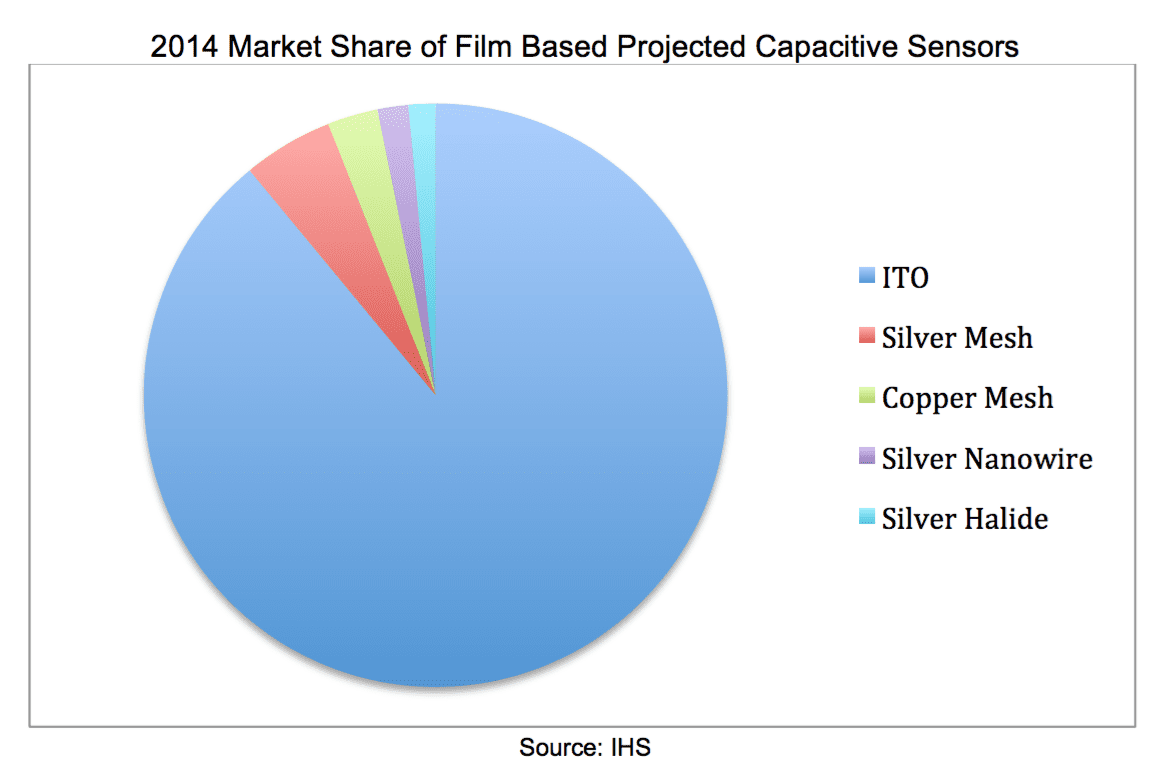Printed Electronics Now reported that Cambrios Technologies is shutting down.
Why is this news for Xymox? Because Cambrios made silver nanowires which were used to make clear conductive films used in projected capacitive touch sensors. Xymox also manufactures projected capacitive sensors. Does Cambrios’ departure from the touch screen ecosystem impact Xymox? In one word, No, but we are interested in those that make it and those that don’t within our market.
For Cambrios, the goal was to take market share from ITO (Indium Tin Oxide). ITO’s long and extensive use within electronics means a deep and entrenched ecosystem and one not easily moved from its position. In 2014, IHS reported the following on film based projected capacitive sensors.

The above chart lists some of the alternatives to ITO film, but not all and within each of those technologies, multiple suppliers work diligently to promote their product. Xymox uses Kodak’s HCF film to produce touch sensors and Kodak’s Film uses Hereaus’ Clevios PEDOT:PSS clear conductive polymer. So our obvious question to Kodak, “What is your commitment to the HCF film and Xymox?” Not surprisingly, Kodak is fully committed as Kodak’s Ed Hurley responded:
We (Kodak) remain committed to our HCF products as an important part of our polyester film business. We continue to work with key customers like Xymox to incorporate HCF into your product offerings. As you know, we have been in the polyester business for over 60 years, having developed a wealth of experience and technology during that time. In addition to the use of our films in the photographic industry, we are also proud that we have been able to expand the use of Kodak polyester film into a variety of other product segments including laser imaging, membrane touch, printing applications, and graphic overlays.
Thanks Kodak!
Rumor has it that PEDOT was at one time used as an anti-static layer on motion picture film.
So why did Xymox choose Kodak HCF film. 1. It’s great stuff. 2. It can be processed using standard screen printing techniques combined with eco-friendly wet processing. This means we can tool-up and produce custom touch sensors economically at all volumes. The ITO guys need high volumes to be cost effective. Our customer base of serves the medical, commercial and industrial markets; sometimes those projects are high volume, most often they are not and now we can help them offer touch screen technology in their product.
